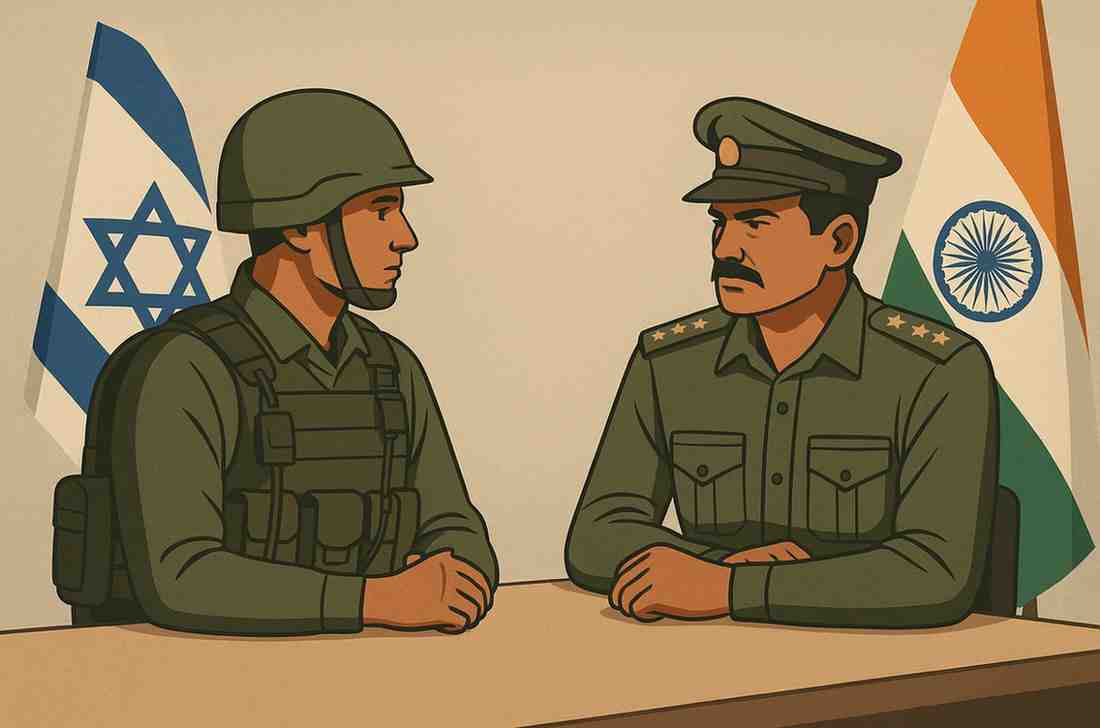In recent months, a perilous debate has surfaced within certain Indian policy and military circles. Some commentators have started arguing that in a future conflict with Pakistan, New Delhi should replicate Israel’s so-called “leadership decapitation” doctrine. Under this model, Israel successfully neutralised Iranian senior military figures to paralyse their decision-making. The argument has gained attention in India mainly due to the setback it suffered in the ill-fated Operation Sindoor. At first glance, the idea may appeal to some overenthusiastic minds; however, a closer reading of the South Asian security environment suggests otherwise.
The structural conditions determined by Pakistan’s military capability, the nature of its command and control, and, above all, the presence of nuclear weapons render the idea not only impractical but also potentially destabilising. Furthermore, the psychological and reputational costs of such operations are often neglected in strategic debates. Far from paralysing an adversary, they usually stiffen political will, bring domestic audiences into line, and chip away at the attacker’s international credibility
Israel’s relative success against Iran rested on a particular set of conditions. The Islamic Revolutionary Guard Corps (IRGC) has historically concentrated authority in relatively visible chains of command. Even after repeated instances of targeted assassinations, from nuclear scientists to senior commander, Tehran did not build robust redundancies into its system. The real weakness lay in its own intelligence apparatus. Gaps in counterintelligence and deception left leadership nodes exposed, enabling Israel to target them with precision without triggering uncontrollable escalation.
Pakistan’s case is not comparable. Since 1998, Islamabad has built a layered and opaque command-and-control system designed for survivability in both conventional and nuclear crises. Pre-designated chains of succession and redundancy ensure no single strike can paralyse decision-making. The objective is less about avoiding every strike than ensuring the state retains the ability to respond decisively. Crises with India provide further evidence. During the Balakot episode in 2019, Pakistan maintained command cohesion and responded with measured force. Similarly, in the aftermath of the Pahalgam incident, the state was able to mobilise quickly and keep control of escalation. May 2025 conflict also revealed that India’s own leadership was hardly insulated: Pakistani drones breached Delhi’s sensitive airspace, including near residences of senior figures, while misinformation fuelled panic. This highlighted India’s inability to absorb or respond to a decapitation attempt.
The temptation to view Israel’s campaign against Iran as a transferable model overlooks the basic fact that South Asia is nuclearised. Deterrence theory makes clear that nuclear weapons compress the margin for error. Israel could act with some assurance that Iran’s response, though disruptive, would stop short of threatening Israel’s survival. In the subcontinent this logic does not hold. A strike intended to incapacitate Pakistan’s leadership would almost certainly be read as existential in nature. An attack, if attempted, would most likely occur through the air or unmanned systems. In this domain, Pakistan retains relative strengths in air defence, drones, and electronic warfare.
India, by contrast, has limited capacity to absorb such strikes and lacks robust mechanisms to manage the escalation that would follow. Historical experience reinforces this: during Rajiv Gandhi’s premiership, Indian planners contemplated attacks on Pakistan’s nuclear facilities, but Pakistan’s effective information architecture and deterrent signalling neutralised the threat. The risk of immediate retaliation, possibly involving nuclear use, would be difficult to contain. Unlike the Middle East, South Asia lacks crisis hotlines or buffers to slow escalation. Each rung on the ladder would be climbed faster, leaving little room for calibrated doctrines to hold. Doctrines that rely on the promise of calibrated escalation, therefore, lose coherence in such a setting.
This difficulty is compounded when one situates the debate within the trajectory of Indian strategic thought since the early 2000s. The articulation of the “Cold Start” doctrine and the subsequent valorisation of surgical strikes illustrate a gradual but discernible move towards doctrines of initiative and offensive manoeuvre. Analysts cannot divorce such developments from their domestic political context, but they also shape the strategic landscape by lowering thresholds for the use of force. Were a policy of leadership decapitation to be added to this repertoire, the destabilising potential would be evident. By contrast, Pakistan has consistently emphasised the credibility of its full spectrum detterence and the institutionalisation of escalation management mechanisms.
All in all, while Israel’s decapitation operations against Iran may have provided short-term tactical gains, their relevance to South Asia is extremely limited. Pakistan has fortified its command system, which remains demonstrably resilient. Policymakers cannot import doctrines wholesale into a nuclearised environment with very different dynamics. To do so is not strategy but wishful thinking, and in wars, wishful thinking can carry existential consequences.
Table of Contents
ToggleFaiza Abid
Faiza Abid is a research assistant at the Centre for Aerospace and Security Studies (CASS), Lahore. She can be reached at info@casslhr.com.












